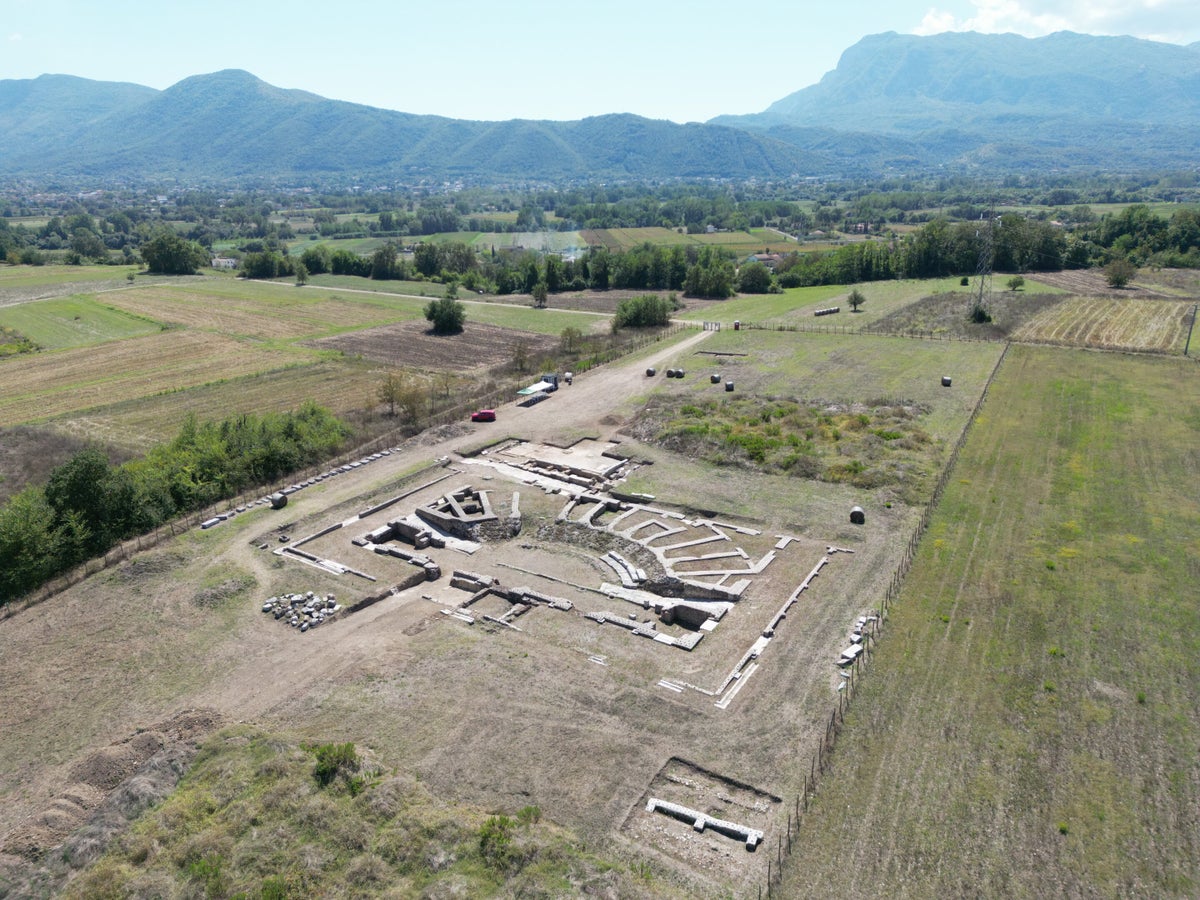
Startling new archaeological discoveries made from a decade-long study in Italy challenge previously held assumptions about the decline of the Roman empire in the region.
New excavations led by the University of Cambridge suggest the town in modern-day southern Lazio in Italy continued to thrive well into the 3rd century AD, a period when it was believed that the Roman empire was in a general state of decline.
The team’s pottery analysis from the site, published in the edited volume Roman Urbanism in Italy, reveals that the town’s decline began around 300 years later than previously assumed.
When archaeologists initially probed the site of the town, which was known to the Romans as Interamna Lirenas, they could only excavate shards of ancient pottery.
However, a geological survey revealed an astonishingly detailed image of the entire town’s layout with a wide range of urban features such as multiple public baths, a temple, a warehouse, and a theatre.
They also conducted a ground-penetrating radar (GPR) survey and launched a series of targeted excavations.
“We found a thriving town adapting to every challenge thrown at it for 900 years. We’re not saying that this town was special, it’s far more exciting than that,” study co-author Alessandro Launaro said.
“We think many other average Roman towns in Italy were just as resilient. It’s just that archaeologists have only recently begun to apply the right techniques and approaches to see this,” Dr Launaro said.
Drone view of the excavation of the two footpaths lining the street separating the basilica (top) from the theater (bottom) at Interamna Lirenas— (Alessandro Launaro)
Previous studies conducted about 40 years ago studied the distribution of potsherds – broken pieces of ceramic material – in the plough soil above the ruins of Interamna Lirenas, and concluded that its occupation peaked in the late 2nd to early 1st centuries BC, before it shrank by the 1st century AD.
But the latest research involved a more comprehensive analysis of tens of thousands of pieces of commonware pottery, showing that the Roman town resisted decline until the later part of the 3rd century AD.
“Based on the relative lack of imported pottery, archaeologists have assumed that Interamna Lirenas was a declining backwater. We now know that wasn’t the case,” Dr Launaro said.
Archaeologists suspect the Italian town was a thriving trading hub at the time of Roman emperor Julius Caesar.
“Interamna Lirenas was strategically located between a river and a major road, and it was a thriving node in the regional urban network. It would have been valuable to Julius Caesar as he sought to consolidate support across Italy during the civil wars,” Dr Launaro said.
Researchers say the town likely served as part of a river port between the late 1st century BC and the 4th century AD.
“River ports didn’t just need warehouses. People spent a lot of time working and resting in the vicinity so they needed all kinds of amenities, just like the ones we found here,” Dr Launaro said.
“This river port enabled Interamna Lirenas to profit from trade between Aquinum and Casinum, key centres to the north, and Minturnae and the Tyrrhenian coast to the southeast. It would have been crucial to the town’s success,” he added.
A plan of Interamna Lirenas showing the distribution of different types of buildings— (Alessandro Launaro)
Archaeologists also uncovered the remains of a roofed theatre with a likely capacity to seat 1,500 people in the Roman town.
“The fact that this town went for a roofed theatre, such a refined building, does not fit with a backwater in decline. This theatre was a major status symbol. It displayed the town’s wealth, power, and ambition,” Dr Launaro said.
Even when Roman Italy struggled, researchers say the town’s theatre was likely still in operation.
“The assumed lack of a theatre here was taken as evidence of the town’s decline....The remains of Interamna Lirenas’ amazing theatre was there all along, just completely buried,” the archaeologist explained.
Researchers also found evidence suggesting that even when some of Interamna Lirenas’ impressive baths were declining – hinting at the possible decline of the overall Roman empire around the time – some town members kept them in operation with benefactions.
It remains unknown how the town eventually met its demise.
Archaeologists did not find any layer of ash or other evidence suggesting that the town was violently destroyed.
They suspect inhabitants likely deserted the town before the Lombard invasion of the late 6th century AD as they may have known that the town was on a direct route marauding armies were bound to use.







